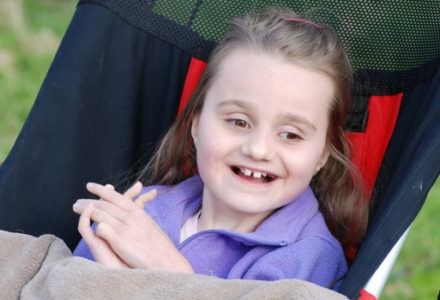Dr Yashasvi Shakdvipiya1, Dr Arun Kumar2, Dr Sanjay Verma2
1Assistant Professor, Dr MPK Homoeopathic Medical College, Hospital & Research Centre (under Homoeopathy University), Jaipur, Rajasthan, India
2PG Scholar, Dr MPK Homoeopathic Medical College, Hospital & Research Centre (under Homoeopathy University), Jaipur, Rajasthan, India
ABSTRACT
Neurodevelopmental disorders affect children in their early life and may persist throughout their adulthood. These children have various communicative, behavioural and learning disabilities. Homoeopathy being a dynamic science works wonderfully on this plane and various homoeopathic remedies have different types of developmental delay and cause behind them. Individualized homoeopathic medicines are helpful in treating such type of disorders when given along with psycho-social therapies.
KEYWORDS
- Neurodevelopmental disorder, Autism spectrum disorder, Rett syndrome, Dyslexia, ADHD, Cognitive behavioural therapy (CBT), Homoeopathy
ABBREVIATIONS
| ABBREVIATIONS | FULL FORM |
| 1. ADHD | Attention-deficit hyperactivity disorder |
| 2. ASD | Autism spectrum disorders |
| 3. CBT | Cognitive behavioural therapy |
| 4. ID | Intellectual disability |
| 5. LMIC | Low and middle-income countries |
| 6. CBI | Cognitive behavioural intervention |
| 7. PSST | Problem-solving skills therapy |
INTRODUCTION
Developmental disorders are better called neurodevelopmental disorders1. Neurodevelopmental disorders interfere with the acquisition and retention. There may be involvement of dysfunction in attention, memory, perception, behaviour, communicative disability, language impairment, problem-solving, or social interaction. Childhood mental and developmental disorders encircles neurodevelopmental, (i.e. attention, memory, perception, language, problem-solving, or social interaction) emotional, and behavioral disorders which results in serious adverse impacts on psychological and social well-being. These children are more prone to experience a compromised developmental trajectory. There is a strong genetic component; male child is more prone to develop such disorder than female. Children with developmental disorders have increased need for medical and disability services.
Neurodevelopmental disorders include1– 
- Attention-deficit hyperactivity disorder( ADHD)
- Autism spectrum disorders(ASD)
- Learning disabilities
- Intellectual disability(ID)
- Rett syndrome
–ADHD is a neurodevelopmental disorder characterized by inattention and disorganization, with or without hyperactivity-impulsivity, causing impairment of physiological functioning. ADHD persists into adulthood in approximately 20 percent of individuals.
–Autism spectrum disorders (ASDs) are conditions in which people have difficulty developing normal social relationships, use inappropriate language, and behave in compulsive and ritualistic ways.
–Intellectual disability (ID) is significantly sub-average normal intellectual functioning present from birth or early infancy, impaired cognitive functioning and deficits in two or more adaptive behaviors. 
–Learning disorders involve an inability to retain, or broadly use specific skills or information, resulting from deficiencies in attention, memory, or reasoning which affects academic performance.
–Rett syndrome is a rare neurodevelopmental disorder that affects a female child who had normal development in the initial 6-month period of her life.
ETIOLOGY AND RISK FACTOR
These issues were found when investigating mental disorders in children, particularly in LMICs (Low and middle-income countries) where other health concerns, such as infectious diseases, are priorities. Risk factors for childhood disorders are nonspecific and pluripotent. For example, children who are maltreated are at higher risk of a wide range of mental and developmental disorders. The health of children is highly dependent on the health and well-being of their parents; the environments in which the children live (including home and school); and in adolescence, the influence of their peers2.
MANAGEMENT
Children with these disorders require significant additional support from families, environment, and educational systems. Psychosocial treatments have been evaluated for children and adolescents with conduct disorder and other disruptive behaviours, including cognitive behavioural intervention (CBI), problem-solving skills therapy (PSST), and multisystem therapy.eg
-Parenting skills training aims to enhance or support the parental role through education and training, thereby improving emotional and behavioural outcomes for children.
-Pharmacotherapy has the strongest evidence for reducing behavioural problems and improving the attention and educational performance of children having ADHD.
HOMOEOPATHIC THERAPEUTICS
Homoeopathy is known to act on patients of different constitution, temperament and diathesis. There are many medicines in homoeopathy which produce and hence cure various mental symptoms. Acting on such constitutions and affecting such mental state it can cure many neurodevelopmental disorders when given along with psychosocial therapies.
Agaricus Muscaris
These children are late in learning to talk and walk, but it is due to mental defect, a slowly developing mind. Other indications for giving Agaricus being, children with twitching and early fainting or nervous girls prior to puberty who have convulsions from being scolded, or from excitement and shock. Children are slow in learning, make mistakes and cannot remember. They are nervous patients who find out mistakes in writing and spelling after going over their own manuscripts.
Baryta Carbonica
These children are late in coming into usefulness, with their studies, to take on their activities and to do their work. They are late in learning to talk, to read, to make the combinations that enter into life; to take in images and form perceptions etc. They have late in learning how to walk, even with good limbs. Baryta carbonica, Borax and Natrum muriaticum, all three have “late learning to walk” due to a peculiar kind of tardiness in the development of the brain, so that they are late in learning to do things; late in developing. But Baryta carbonica leads them in this late coming into the activities.
Calcarea Carbonica
These children have “Late learning to walk,” because the legs are so weak. Actually, it is not late learning to walk, but it is late walking. A child knows how to walk, but it can’t walk due to a defect in bone or weakness. Calcarea carbonica has very weak limbs, flabby muscles and poor bones, and hence he is late in learning to walk.
Calcarea Phosphorica
Here the child is losing flesh along with slow learning to do things and walk, or the legs are not strong enough to support the body, or it is due to defective mental development.
Medorrhinum
These children are rachitic, stunted in growth, dwarfed and mentally dull and weak. They usually have constitutional effects of maltreated and suppressed gonorrhoea.
Natrum Muriaticum
These children have “late learning to walk” but this is actually because of brain trouble due to which child is late in learning to do things.
Phosphorus
Phosphorus is suited to feeble constitutions, who have been born sick, grown-up slender and too rapidly. They are emaciated or are rapidly emaciating; especially children who are going into marasmus, and in persons who have tubercular history.
Silicea Terra
These children are slow in learning to walk due to deficient nutrition not because the food is lacking in quality or quantity but from improper assimilation.
CONCLUSION
After using Homoeopathy for various acute and chronic diseases, we should focus on the present scenario of genetic and lifestyle disorders, where other systems of treatment do not have many roles to play. Homoeopathy works well both as a therapeutic and constitutional approach. We may select different homoeopathic medicine according to the type of developmental delay and cause behind it. Developmental disorders of few medicines and their probable causes have been described below in Table 1.
Table 1.Summary of various developmental disorders in different medicines and their causes
| MEDICINES | DEVELOPMENTAL DISORDER | CAUSE |
| 1. Agaricus muscarius | Late in learning to talk and walk | Due to mental defect3 |
| 2. Baryta carbonica | Late in learning to talk, to read, late in learning how to walk, even with good limbs | Tardiness in the development of the brain3 |
| 3. Calcarea carbonica | Late learning to walk | Because the legs are so weak3 |
| 4. Calcarea phosphorica | Slow learning to do things and walk | Legs are not strong enough and defective mental development3. |
| 5. Medorrhinum | Rachitic, stunted in growth, dwarfed and mentally dull and weak | Suppressed and maltreated gonorrhea3 |
| 6. Natrum muriaticum | Late learning to walk | Because of brain trouble3 |
| 7. Phosphorus | Born sick, grown-up slender, grow too rapidly, are emaciated or are rapidly emaciating. | Tubercular history3 |
| 8. Silicea Terra | Slow in learning to walk | Due to deficient nutrition from improper assimilation4 |
REFERENCES
- Brian S. Definition of Developmental Disorders – Children’s Health Issues – MSD Manual Consumer Version [Internet]. MSD Manual Consumer Version. 2018 [cited 2 November 2018]. Available from: https://www.msdmanuals.com/home/children-s-health-issues/learning-and-developmental-disorders/definition-of-developmental-disorders
- Scott J, Mihalopoulos C, Erskine H. Childhood Mental and Developmental Disorders [Internet]. ncbi.nlm.nih.gov. 2018 [cited 2 November 2018]. Available from: https://www.ncbi.nlm.nih.gov/books/NBK361938/
- Kent JT. Lectures on homoeopathic material medica together with Kent’s new remedies incorporated and arranged in alphabetical order. New Delhi: B. Jain Publishers (P) Ltd; 2012.
- Allen HC. Keynotes rearranged and classified with leading remedies of the materia medica and bowel nosodes. New Delhi: B. Jain Publishers (P) Ltd; 2010.





